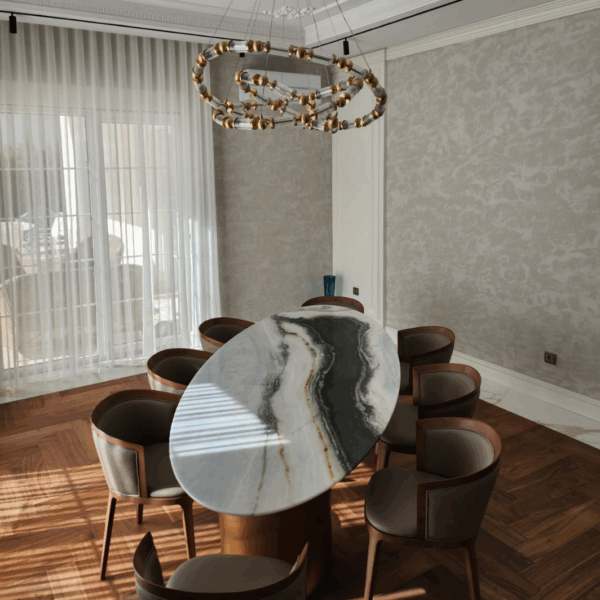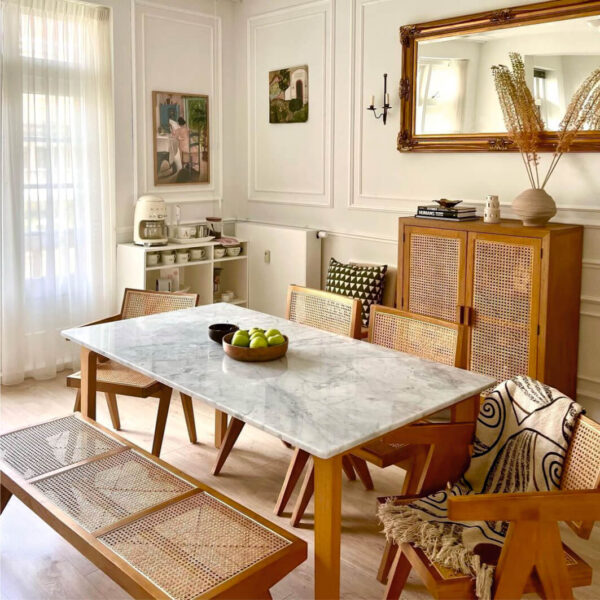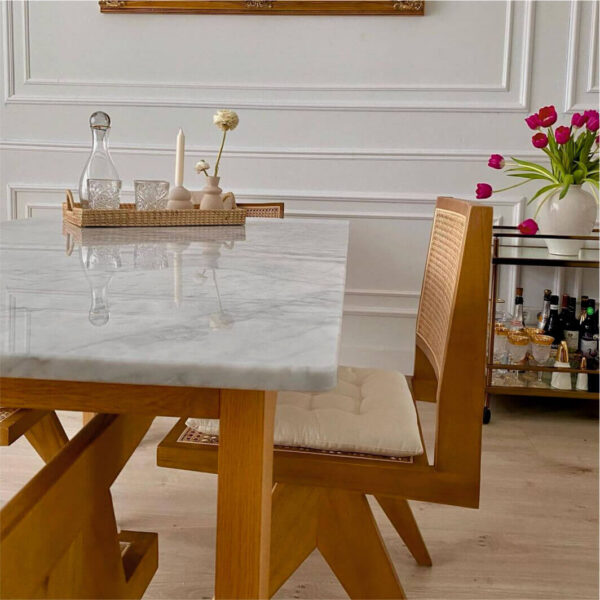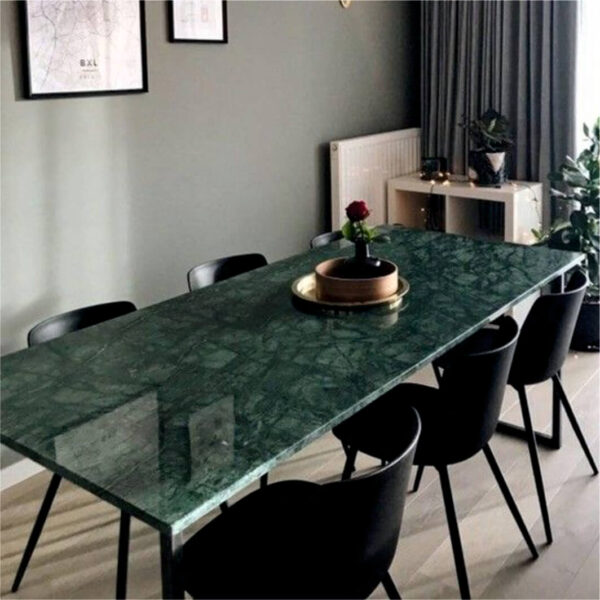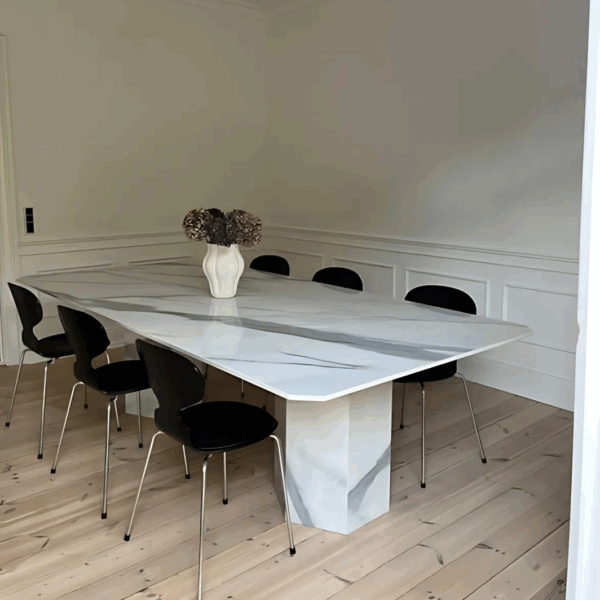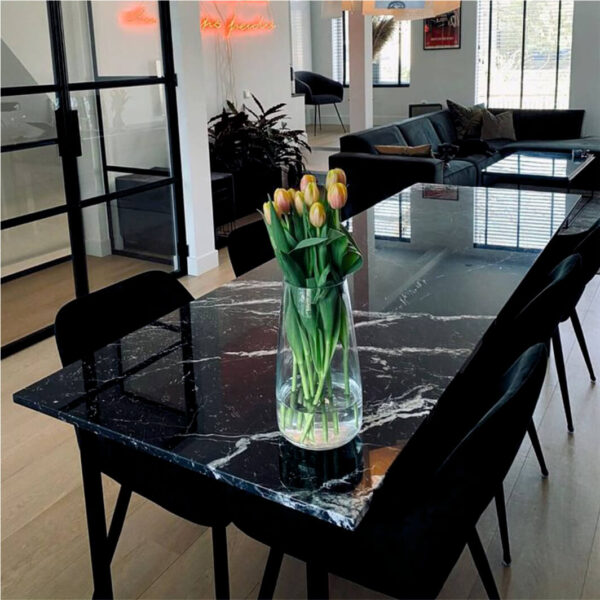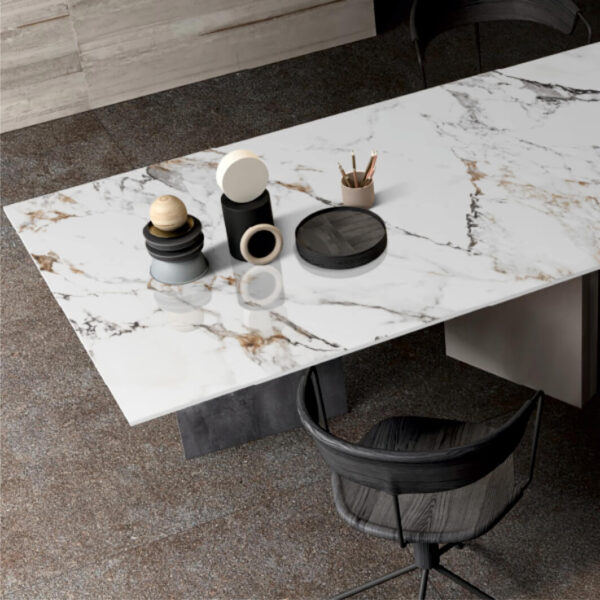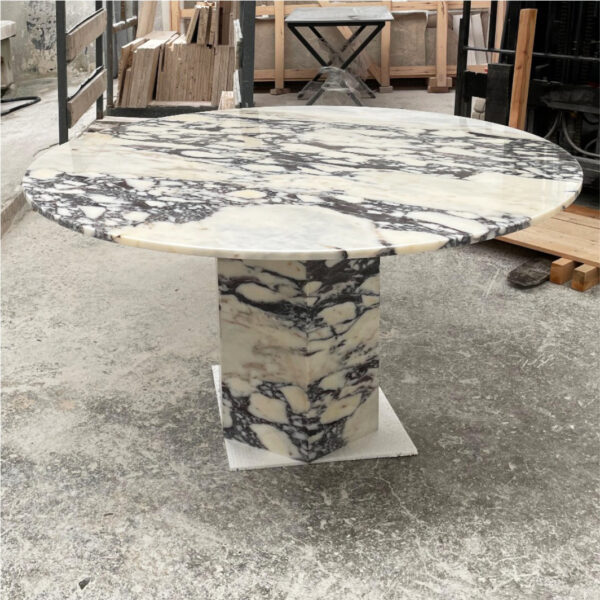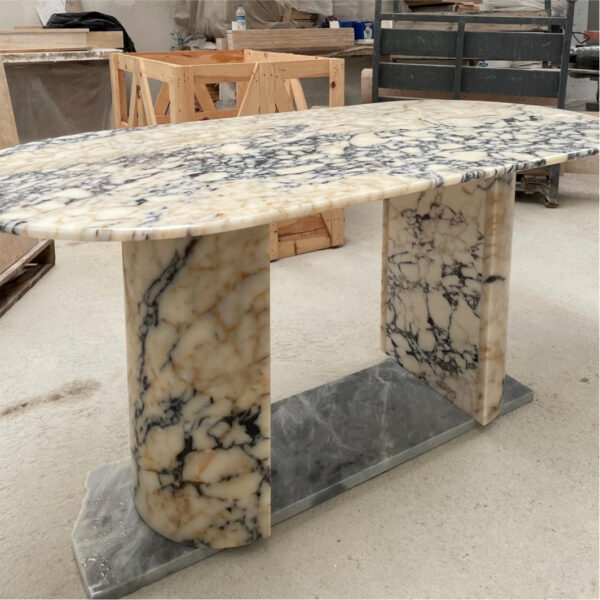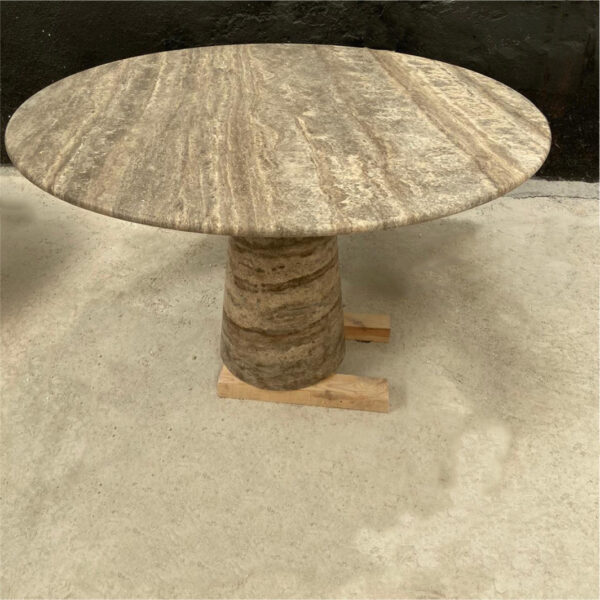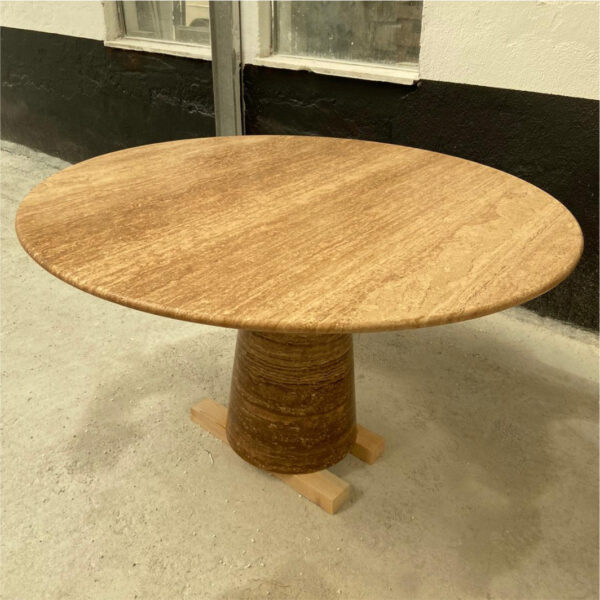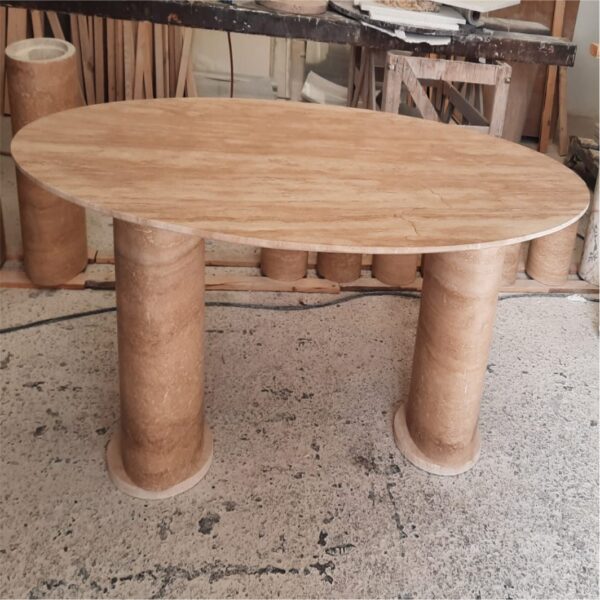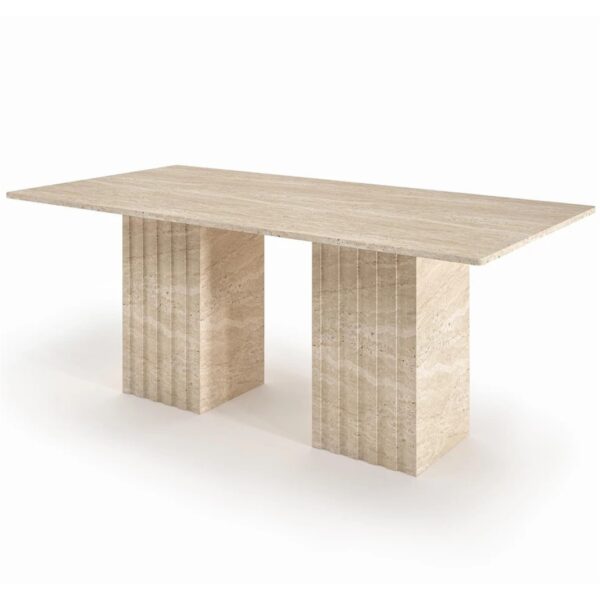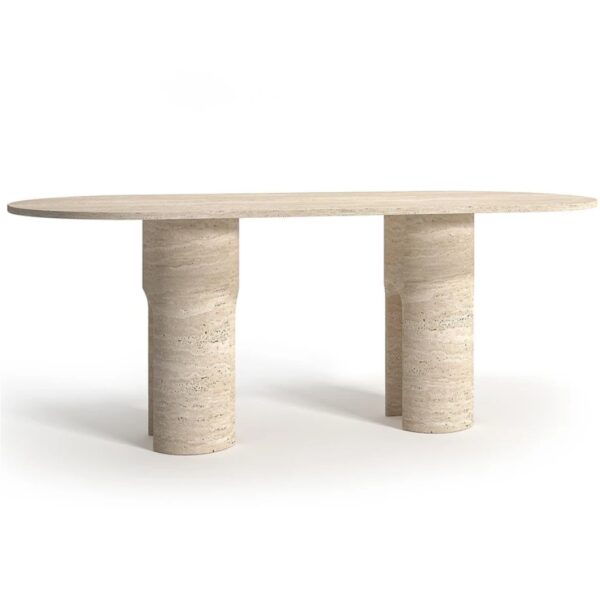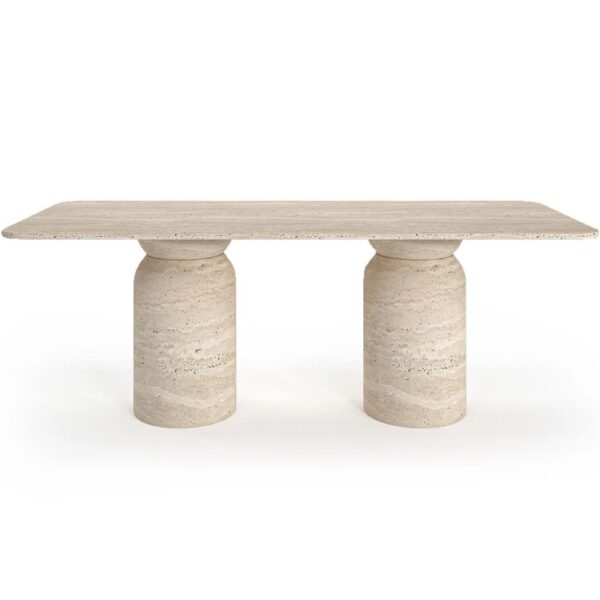The Beauty and Value of Natural Stone Tables
When it comes to adding elegance, durability, and character to your interior or outdoor space, a natural stone table can be a showpiece. Natural stone tables—whether marble, travertine, porcelain, or onyx—combine unique beauty with strength.
1. Why Choose a Natural Stone Table?
1.1 Durability & Longevity
Natural stone is hard, scratch-resistant, and can withstand heat—ideal for tabletops. Granite, in particular, is prized for its superior strength and resistance to scratches and stains.
1.2 Indoor & Outdoor Use
Many natural stones (like travertine or certain types of limestone) can be used both indoors and outdoors. A stone dining table for an outdoor patio or stone coffee table by your poolside can seamlessly link interior and exterior design.
1.3 Thermal & Acoustic Benefits
Some stones, especially porous ones like travertine, offer natural thermal insulation and sound absorption, helping maintain surface comfort even in warmer climates.
1.4 Elegance & Uniqueness
Each slab of natural stone has its own veins, patterns, and color variations. No two pieces are identical. For example, Carrara marble is famous for its soft white background with grey veins, while Calacatta marble offers bolder, dramatic veining.
2. Common Types of Natural Stones for Tables
When selecting a natural stone table, understanding the characteristics of each type of stone can help you choose the best material for your space. Below are the most popular natural stones used in table design, along with their defining features:
● Marble
-
Known for its classic beauty and luxurious appearance
-
Features elegant veining patterns in shades of white, gray, black, green, or gold
-
Smooth, cool surface with a polished or honed finish
-
Often used for dining tables, coffee tables, and decorative products
-
Requires regular sealing to prevent staining and etching
● Travertine
-
Recognized by its linear pores and soft, earthy tones like beige, cream, or light tan
-
Offers a textured, natural feel
-
Often used in both indoor and outdoor furniture
-
Requires surface filling and sealing for smoother use
● Porcelain
-
Resistant to scratches, stains, and heat
-
Simple to clean with mild soap and water
-
Withstands high temperatures without damage or discoloration
-
Non-porous surface prevents liquids from penetrating
-
Available in various colors and finishes
● Onyx
-
A translucent stone with dramatic, colorful veining
-
Can be backlit for a stunning visual effect
-
Found in shades of green, amber, pink, white, and black
-
Very unique and luxurious, often used for accent tables or statement pieces
-
More delicate and sensitive to scratches or chemicals
3. Design & Style Considerations
3.1 Table Shape & Edge Profiles
Natural stone tables come in round, rectangular, square, hexagonal, etc. Edge profiles (beveled, bullnose) influence both aesthetics and safety.
3.2 Finishes & Surface Treatments
Polished (glossy), or honed (matte) finishes provide different looks and functionalities. A polished marble is elegant but might show fingerprints; a honed finish may hide scratches better.
3.3 Indoor vs Outdoor Use
Not all stones are suitable for outdoor use. You should choose frost-resistant, low-porosity stones and apply proper sealing if you place a stone table outdoors.
4. How to Choose & Buy a Natural Stone Table
4.1 Source & Quality of the Slab
Always inspect for fissures, cracks, or veins that weaken structural integrity. Ask for slab provenance (which quarry). Higher-grade slabs cost more but last longer.
4.2 Thickness & Weight
A thicker slab is sturdier but heavier. Ensure your floor, base, and installation can accommodate the load.
4.3 Transportation & Installation
Natural stone is fragile under stress. Use experienced movers, and plan delivery timing for minimal handling.
4.4 Custom vs Standard Sizes
Many stone furniture makers offer custom sizes and shapes. A custom stone dining table can fit your exact space or layout seamlessly.
4.5 Budget & Value
Natural stone tables tend to be premium. Compare cost per square meter of high grade vs lower grade, and factor in shipping, installation, and maintenance in your overall budget.

